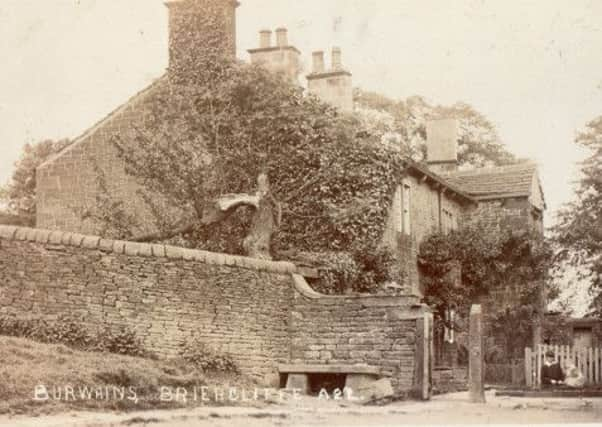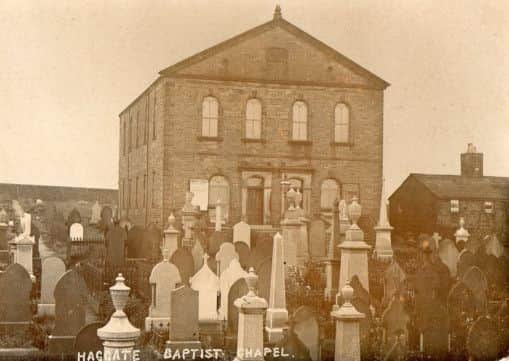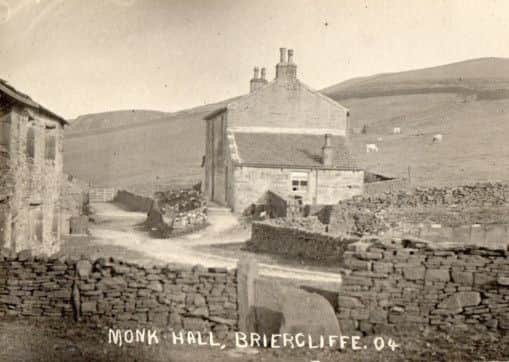Elizabethan Poor Law help the needy


It was mentioned that, in the late 16th Century, partly because of the decline in the local monastic system, it was recognised things had to change.
What was introduced was the Elizabethan Poor Law which was not the result of a single piece of legislation but the accumulation of a number of Acts of Parliament, the common features of which were the establishment of Poor (or Work) Houses with the additional provision of outdoor relief, or relief in the homes of the recipients. Another aspect of the new system was that the relief of the poor was to be funded, not through taxation, but locally by means of a poor rate imposed on landowners and tenant farmers.
Advertisement
Hide AdAdvertisement
Hide AdThis does not mean to say charitable giving ceased. In all probability this became more important and a wide variety of charities were established in all parts of the country. Unfortunately, we can quote few examples for Burnley but the Grammar School was one of them.


Burnley was little more than a village for approaching 200 years after the introduction of the 1597 and 1601 Acts for the Relief of the Poor. These Acts provided for the apprenticeship of poor children, the provision of work for unemployed adults, the erection of hospitals (to be built on waste land) for the impotent, the financing of the system locally and that all beggars (except for those begging in the parishes of their birth) to be classed as “rogues”.
Each parish had to appoint an officer responsible for the collection of the poor rates and maintenance of the poor. He was also responsible for the settlement of paupers. For Burnley paupers, who had become chargeable on some other parish, there were two alternatives. The first was that Burnley would pay for their maintenance and funds sent to the place of their residence. The second was for Burnley to pay for the cost of the paupers to be returned to Burnley where they would be placed in the workhouse or given relief in some other property.
We know Burnley had its own poor house. However, it did not acquire one until 1730 when the village was on the verge of developing into the town we now know. On June 13th, 1730, the Town Vestry, the local government of the day, agreed “to take a convenient House for placing and settling the poor to work in”. What seems to have happened was that the Townships of Burnley, Habergham Eaves and Briercliffe (which included Worsthorne) decided to rent a building in what is now the Brennand Street area of Burnley to be converted into a workhouse.
Advertisement
Hide AdAdvertisement
Hide AdUnfortunately, we know very little about this property but it may have been a substantial building, probably with a garden, and with rooms in which work could be carried out. The Townships agreed they would jointly finance the project in proportion to their individual needs, buying materials for those who were able to work and providing for those who, for whatever reason, were not.


In the case of Burnley and Habergham Eaves, this system lasted until 1796 but, with regard to Briercliffe, it is not known when the agreement came to an end, or even if it had even been implemented. However, by the 1750s, Briercliffe had its own workhouse which was situated in Haggate. A single Poor Book has survived for 1754-5 and, from it, we find out how the system operated. It is not possible to do the same for Burnley because, apart from a few disconnected references, nothing of a similar nature has survived.
The workhouse at Haggate was initially a pair of cottages with workrooms. Later a third dwelling was added and it appears this property had a garden. In addition, it is known Monk Hall, Extwistle, served as something like a poor house but this was in the 1820s when there was considerable unemployment among the handloom weavers of the area.
We know little about how Monk Hall was used but, until recently, there was, inscribed into the gable end the legend “Hard Times, 1827”, the time when the building played an unspecified role in the relief of the poor. If asked to guess what its use might have been, I would suggest it had something to do with the construction of Jerusalem Farm (also known as “Th’ Enclosure”) on Extwistle Moor and which, like nearby Sweet Well, formerly Little London Farm, dates from this time. Both of these farms, including drainage work and their field walls, were constructed out of funds intended for the relief of the poor.
Advertisement
Hide AdAdvertisement
Hide AdThe activities of the Briercliffe Overseer of the Poor, and his assistants, can be traced not only through the Poor Book, which I will refer to below, but also through apprenticeship and settlement records.
The workings of the first of these can be seen in an example of 1736 where the Overseer helped to arrange an apprenticeship with Lawrence Hitchen of Great Marsden (Nelson) for Richard, son of John Hayhurst of Briercliffe.
In 1796, the Churchwarden and Overseer for Briercliffe and Extwistle, William Hitchen and John Barker respectively, arranged an apprenticeship for James Thornton who was described as “a poor child”.
The master, who agreed to take James, until he reached the age of majority, was Stephen Smith of Hill, a woollen manufacturer who attended the Halifax market, so the apprenticeship was probably for weaving.
Advertisement
Hide AdAdvertisement
Hide AdA number of settlement documents relating to Briercliffe have survived and some are held by the Briercliffe Society. One refers to a case in 1717 when the Briercliffe Churchwarden and the Overseer wrote to their opposite numbers in Stansfield (Todmorden) asking if they would remain responsible for Susan Wade if she, or any of her children, were to appeal for assistance. In their reply the officers of Stansfield agreed Susan Wade was legally settled in Stansfield and said they would not fail to carry out their responsibilities to her and her family.
Another is more local and refers to a case in 1774-5. In this instance it was stated John Todd, Ann, his wife, and Jane, Catherine and Ann, their children, were poor persons likely to become chargeable and are lately come out of Great Marsden, which was the place of their last Legal Settlement. They had arrived in Briercliffe and were likely to become chargeable there. The Overseer of Briercliffe had sought advice from a magistrate who ruled the Township of Briercliffe was within its rights to convey the Todds back to Great Marsden.
Briercliffe families were also returned to their own Township. No date is given for this example but it must have been in the later 18th Century. The Overseer of Burnley-cum-Habergham Eaves wanted to remove Henry Catlow, Susan, his wife, Mary, Ann, Margaret and Martha, their children, to the place of their Legal Settlement. The Briercliffe Overseer agreed and accepted the cost of “transporting” the family back the few miles from neighbouring Burnley.
We should now turn to the Briercliffe Poor Book of 1754-5.
This week I am only going to give one example of the information that can be gleaned from the book. The book itself describes activities at the workhouse in detail, describes conditions there and tells us what work was provided for the inmates and how it was organised. The book even names a local doctor, whom otherwise we would know little about, and few of the paupers themselves.
Advertisement
Hide AdAdvertisement
Hide AdThe Briercliffe Poor Book also confirms that both indoor and outdoor relief were available. Indoor relief is that which was provided in the workhouse, outdoor relief was provided in the homes of individual paupers. It is most likely the following information refers to both. At some point between 1754 and 1755 the Overseers for Briercliffe were Henry Halsted and Joshua Nuttal (sic) and Stephen Smith was the Churchwarden. They signed an agreement with John Spencer, probably of Blackhouse, for the supply of furniture.
The goods included, “1pr bed stocks, chest, blankets etc”, valued at twelve shillings (60p); a “little bed and bedding”, at 8s.3d: “a long table, one board, two chairs and a cradle”, 2s.10d; a “chest and desk”, 5s.4d; a “little table”, 3s.8d; and assorted articles such as tongs, brigs, backstone, chaffing dish and pan, a glass case, pewter dishes and pewter plates.
These could have been for use in the workhouse but it is just as likely some of them could have been supplied to pauper families living in their own, but rented, homes.